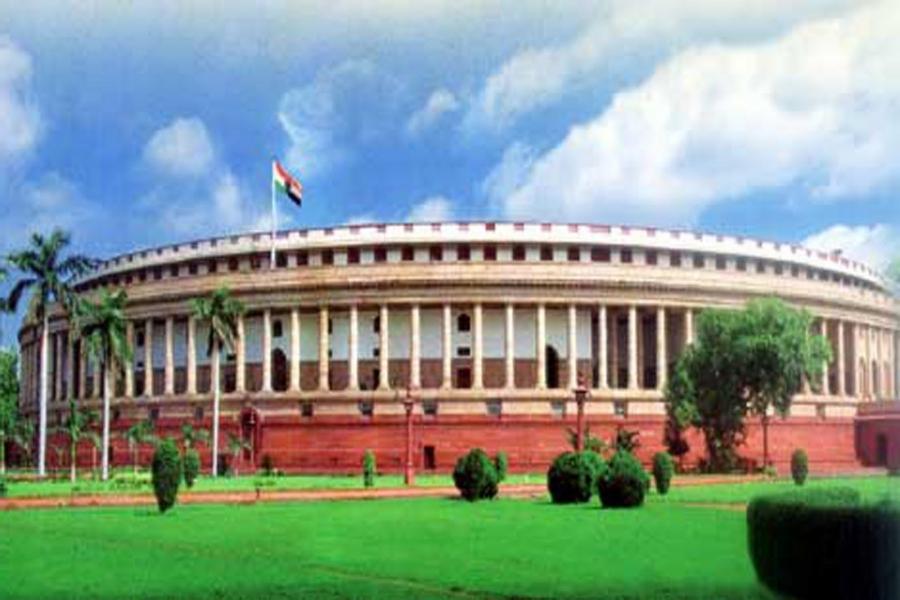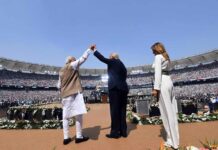The Union Budget 2020-21 has two goals. First, to tackle the current problems plaguing the economy which may be a continuing one or one that has cropped up in the year in which the Budget is drafted. The second goal of a Budget is to try to fulfill the vision that the government puts out. This again could be pertaining to the immediate goal for the coming year or for a longer term.
In the present case, the problem has been that the economy has slowed down or, as this author has been arguing, it has gone into a recession. This is a serious matter and needed urgent attention. However, the government is in denial and the FM stated in the beginning of her speech that the ‘fundamentals of the economy are strong and that has ensured macroeconomic stability’.
The government has repeatedly spelt out its vision as doubling farmers’ incomes by 2022 and achieving a GDP of $ 5 trillion by 2024. But is this feasible with an economy which, as per the official data, is slowing down and certainly not if this author is correct and it is in recession?
The two aspects mentioned above are indeed interlinked. If the economy does not get out of the recession it is facing (or even the slowdown), then neither would the farmers’ incomes double nor would the GDP reach $ 5 trillion by 2024. Thus, the two objectives become one and the same, namely, how to give a boost to the economy in 2020-21 and more especially how to boost the rural and farm sectors? Something pretty drastic needed to be done for this purpose. It should not have been business as usual as appears from a bare perusal of the Budget. How does the Budget measure up to these goals?
The Broad Vision in the Budget
The Union Budget 2020-21 targets an expenditure of Rs 30.42 lakh crores which will be 13.3 per cent of the GDP for 2020-21. This is no small amount and it can be used to give to every section and sector of society and that is what all Budgets do. This is political correctness to show that the government cares about everyone. So too in the Budget 2020-21. There is something for the senior citizens, SCs and STs, farmers, women and so on. And, because the crisis is deep, the government announced schemes for all sections of society. This led to the longest Budget speech.
The FM announced that the Budget is structured around three themes of a) ‘caring’ society, b) aspirational India and c) economic development for all. She announced that the Budget is dedicated to provide “Ease of Living” to all citizens.
The FM announced that this Budget is being formulated ‘in the backdrop of two cross-cutting developments:
a) Proliferation of technologies, specially analytics, machine learning, robotics, bio-informatics and Artificial Intelligence; and
b) The number of people in the productive age group, that is, 15-65 years in India, being ‘at its highest’.
These indeed are high sounding goals. But the issue is whether they would be implemented, especially, given the poor state of governance in the country. The FM flagging the poor state of governance quoted the former PM, Shri Rajiv Gandhi, who said that ‘the common and deserving citizen was only receiving 15 paisa of every rupee sent for him’. He said this in 1988 and the situation has only deteriorated since then so that it is not clear how well would all these high sounding schemes be implemented.
Sixteen action points are listed as the focus of the government like encouraging State governments to implement model laws, balanced use of all kinds of fertilisers including the traditional organic ones, creation of warehousing and village storage scheme, seamless national cold supply chain for perishables, development, management and conservation of marine fishery resources and involving the youth in fishery extension through 3477 Sagar Mitras and 500 Fish Farmer Producer Organisations.
Key Announcements in the Budget Speech
Some of the more important aspects of the Budget announcements are:
- Moving toward Rs. 103 lakh crores investment on infrastructure in five years.
- Disinvestment to be accelerated—LIC shares to be sold via public offer. Goal to get Rs. 210 lakh crores from disinvestment as against Rs. 65,000 crores reserved this year
- Improved governance and respect for wealth creators.
- Tax administration to be made efficient. Creation of a Taxpayer’s Charter.
- Lower Income tax rates if people do not resort to concessions and deductions. People have the choice to stay with the old system or migrate to the new one.
- Dividend distribution tax (DDT) to be done away with.
- Greater protection to domestic industry via changes in customs duties. FTAs to be aligned to domestic policies.
- Changes in laws so that contracts are honoured.
- Bank mergers to be encouraged.
- Insurance of Depositors’ money up to Rs. 5 lakh per deposit (Rs. 1 lakh now).
- Deepening of bond markets for long term finance for infrastructure.
- Trigger mechanism of FRBM used for structural reform.
- Data systems to be made credible. Introduce transparency of fiscal numbers.
Everything You Need to Know About Goods and Service Tax in India
But announcements do not necessarily imply that the goals would be achieved. For instance, it is said in a large part of the speech that there is to be focus on Agriculture and allied activities, Irrigation and Rural Development, and that an allocation of Rs. 2.83 lakh crores has been made for the year 2020-21. If this was to be so, the allocations to these sectors should have increased substantially. But that is not the case. Expenditure on Agriculture and Allied activities was to be Rs. 1.5 lakh crore in 2019-20 but what it has been Rs. 1.2 lakh crore (20 per cent short) now in 2020-21 it is slated to be Rs. 1.55 lakh crore. This year Rural Development spending is Rs. 1.43 lakh crore and next year it is going to be Rs. 1.45 lakh crore; almost static. Thus, there is no major step-up in these expenditures; indicating that these areas are not being accorded any special priority.
The Budget at a Glance lists expenditures on 116 major schemes of the government. Presumably these are the show pieces of government and should get substantial priority in terms of not only current expenditures but in the coming year. Unfortunately, this is not visible. In many cases expenditures in the current year (2019-20) are less than what was budgeted for. Like, in the case of Green Revolution, White Revolution, Blue Revolution, Pradhan Mantri Krishi Sichai Yojana, PMJAY Ayushman Bharat and Pradhan Mantri Gram SadakYojana. The implication is that the targets could not be fulfilled.
In many cases, the allocation for 2020-21 is the same or even less than the allocation in 2019-20. In other words, adjusted for inflation, the allocation is less than in the current year. For example, in the case of MGNREGS, Swachh Bharat Mission (Urban), Swachh Bharat Mission (Gramin), National Health Mission, Jobs and Skill Development, PMJAY-Ayushman Bharat and AMRUT and Smart Cities Mission. The implication is that for these schemes, a lower priority is being accorded even though they are presented as flagship schemes.
Macro Aspects of the Budget
The Budget 2020-21 is first a macro exercise and then a micro one. Hence it is important to analyse the overall numbers of revenues, expenditures and deficits. If the macro is not right, the specific sectoral targets may also not be achieved. For instance, if tax resources are short, there will be cut back in expenditures or the deficit will rise. This has happened in both 2018-19 and 2019-20.
The Budget estimate for 2019-20 for revenue was Rs. 24.6 lakh crores but the Revised estimate shows Rs. 21.6 lakh crores, a shortfall of Rs. 3 lakh crores or about 12 per cent. Collections of all taxes are less than what was projected last year. So, expenditures had to be cut back. Given that private consumption has been adversely impacted and investment rate has continued to fall, it was expected that the government expenditures would be given a boost. But that was also cut back from the budgeted figure and that aggravated the demand problem. In 2020-21 too, if the rate of growth of the economy continues to fall, revenues will be less and expenditures may again have to be curtailed.
The government also garners resources from the Public Sector via the Internal and Extra Budgetary Resources (IEBR). The government’s dependence on this has been rising and that is also the case in 2019-20. From the Budget Estimate of Rs. 4.44 lakh crores it has gone up to Rs. 6.22 lakh crores in the revised estimates, a rise of 40 per cent. This strains the PSUs. Disinvestment can also be used to raise funds. For 2020-21 the disinvestment target has been raised from the revised estimate of Rs. 65,000 crores for 2019-20 to Rs. 2.1 lakh crores. LIC shares are to be sold as a big ticket item. Just like in 2019-20, will such a big target be achieved? There are many a slip between the cup and the lip. The government also got extra funds from the reserves of the RBI and this could happen again. If these targets are not achieved, there will be further slippage.
Why is it important to achieve a turn around? Every one per cent rate of growth means Rs. 2 lakh crores. So if growth falters due to acts of omission and commission in the macro aspects of the Budget, that would be the loss of incomes and a large part of that would be lost by the marginalised sections of society. So, even if allocations to these sections are increased by a few thousand crores here and there, they would lose much more due to the infirmities in the macro aspects of the Budget.
How can the Budget help increase demand in the economy which will then result in increased capacity utilisation in industry which will in turn spur investment levels and lead to higher rates of growth? The government can increase expenditures and deficits to boost demand in the economy.
For a given resource collection, if the expenditures are increased in the Budget, the deficit rises. Similarly, for given expenditures, if taxes are reduced, the deficit would rise. Thus, the choice is either tax cut or increase in expenditures. Both lead to an increase in the deficit.
The government in the mistaken belief that investment by businesses is down because their profits are down, drastically cut the corporate tax rate and gave other concessions to businesses last year. It was estimated that these would lower revenue collection by Rs. 1.45 lakh crore. It was also hoped that lower tax rates will spur foreign investment in businesses.
But this would not increase consumption since the well-off, who are the owners to businesses, have enough incomes and would not consume more. Would they invest more and demand could go up due to this? That is also unlikely since, according to the RBI, capacity utilisation has dropped to 70 per cent. In this situation no extra investment from the private businesses would be forthcoming. But the tax cut led to increased profits and a boom in the stock markets without causing investment to rise. Similarly, RBI cut interest rates five times last year but investment has not picked up.
In brief, the fiscal deficit was raised without demand going up. The fiscal space available was wasted. Instead if this much money was spent on the unorganised sector, demand would have immediately gone up. The poor consume their entire income while the rich save most of their income and they raise demand via investment but in the present circumstances that is not about to happen.
The True Fiscal Deficit
In spite of the cut in expenditures in the last two Budgets, the fiscal deficit has turned out to be higher and for 2020-21, the government has used the Trigger mechanism of FRBM for structural reform to allow the deficit to rise above the target level. What is the actual Fiscal Deficit and why is it overshooting the target level?
The government has been in denial and has been assuming a higher level of growth than actual. So, for 2019-20, the rate of growth assumed was 12 per cent while it is turning out to be less than 7 per cent. Again for 2020-21, the rate of growth assumed is 10 per cent while it may turn out to be much less given the present indications. With no turn around in sight, the government is assuming a real growth rate of 6.5 per cent. No wonder, revenues have been falling short by huge amounts. GST collections and direct tax collections have been much less than budgeted for. So, in spite of cuts in expenditures, the fiscal deficit is turning out to be more than budgeted.
The Fiscal deficit is the sum of the deficits in the budgets of the Centre, the States and the Public Sector units. The Centre has been pushing its shortfall in resources to the Public Sector Units and not counting that in its own Budget. For 2018-19, the CAG suggested that the actual fiscal deficit was 5.8 per cent if these off-Budget items are included. Add to that the 3 per cent deficit of the States and the total comes to 8.8 per cent. In 2019-20, the shortfall in resources is even greater so that in spite of the bonanza from the RBI, the deficit has been running much higher. As shown by this author a few months back, that if expenditures are not cut, the deficit would be about 11 per cent. [This is mentioned in Arun Kumar, “Will Tax Cut Boost the Economy?”, Mainstream (October 19, 2019)] Even this level of deficit is proving to be inadequate to boost demand in the economy.
Other Important Features of the Budget

Businesses have been complaining of tax terrorism and the government has justified it in the name of checking the black economy. Last year 5,000 High Net Worth Individuals (HNWI) left India and over the last five years 23,000 have left. This is leading to a slowdown in investment in the economy. The problem is that the black economy is being dealt with in a partisan manner to silence criticism. Opposition politicians, businessmen, and media are under threat. It may not be that they have not generated black incomes but if the attempt to tackle the problem is seen as partisan, the whole drive against the black economy gets discredited. There is authoritarianism and undermining of democracy and silencing of dissent.
It is essential that investment rises if the economy is to recover. The government’s goal of investing Rs. 102 lakh crores in infrastructure in the next five years should be a step in that direction. But is the Budget moving in that direction? There should be an average of Rs. 20 lakh crores of investment in infrastructure. But, the private sector is unlikely to increase its investment under the present circumstances and most of it has to come from the government.
The States facing a huge shortfall in their Budget are unlikely to be able to increase their investments so the burden has to fall mostly on the Central Government. But, capital expenditure by the Central Government for 2020-21 is Rs. 4.1 lakh crores. Resources from the public sector (called IEBR) are likely to be Rs. 5.82 lakh crores. From this one needs to subtract Rs. 2.1 lakh crores of disinvestment which is reducing the capital outlay of the government so that the net planned investment is only Rs. 7.8 lakh crores; this is far from the target of Rs. 20 lakh crores. Even this amount is not all in infrastructure but in various things.
Disinvestment is being stepped up substantially. Apart from the undesirability of these steps from a broader long term perspective, these are one shot revenue sources. They are not the solution to the problem of slowdown and need for extra resources to step up growth. LIC is an important financial institution which has been associated with the social security of the middle classes. It has also been providing resources to the government in various ways like buying shares of IDBI to boost disinvestment. It’s being subject to the discipline of the stock markets will lead to pressures for generating profits and there would be a slippage in its role of providing social security to the large numbers of people it caters to. This is a slippery slope.
ONGC has been used in the past to give resources to the government and that has led to the deterioration in its economic health. Now the railways also see creeping privatisation with trains to be run by private parties. What would happen to the normal trains which will start getting a lower priority in their running? Losses of the railways can only rise. This was seen in the case of air traffic. The public carrier suffered as the private carriers started to manipulate policies in their favour at the expense of the public carrier. This is not to argue that the public sector does not suffer from large inefficiencies. But the solution is to eliminate these inefficiencies and for the Budget to fund the social security burden put on the public sector units.
The programme to raise the protection to Indian businesses via changes in customs duties is another important feature of the Budget. This has continued the trend of the last three Budgets. China is the main threat that is being addressed. It reflects the inability of policy-makers in making Indian industry more competitive to face the challenge from China. No wonder India withdrew from RCEP at the last minute. The changes being made in the duty structures will lead to a price rise but given that investment is lagging behind, it is not clear whether any gains would accrue to Indian industry in terms of its competitive position?
There is much talk of respecting wealth creators. This is possibly to counter the accusation of tax terrorism. However, given the high level of disparity pointed out by the OXFAM report, this is another source of shortage of demand in the economy. The Budget could have taken steps to increase demand by helping reduce disparities and increase incomes in the unorganised sectors. A new path needs to be charted whereby wealth tax, estate duty and gift tax should be revived to obtain resources from the top one per cent of the citizens who have benefitted enormously in the last 30 years. These funds could have been used to generate incomes and employment in the unorganised sector. This would be a positive sum gain which would also benefit businesses as demand immediately responds.
There is focus on encouraging foreign investment. The government, unable to step up investment, is seeking foreign investment. In the last Budget it sought to get Sovereign funds. That was given up due to Opposition. Now it is suggested that foreign funds be sought for higher education. But would it come, given the state of most of our institutions? And, do we want markets to dictate the fees so that profits can be generated from education? Also would they not dictate what should be taught in our educational institutions? This is a slippery slope that is best not traversed. There is need to find internal resources for funding education.
Conclusion
The Budget 2020-21 is also full of contradictions. It wants a more open economy but raises tariffs. It wants wealth creation but there is tax terrorism. It wants to raise investments but there is inadequate effort to do so. It wants the economy to grow but in the name of fiscal prudence it does not do what is necessary. The key is to boost the economy; but this is not attempted.
Global factors and the past misdeeds of the UPA Government are being blamed for the problems while these are clearly not the culprits. The problem is not cyclical and the economy will not recover on its own. Even the business community has come out in favour of increasing the deficit to boost the economy. They know that for every one per cent decline in the economy’s rate of growth, loss in output is Rs. 2 lakh crores a year. So, from the peak rate of growth of 8 per cent, six quarters back, to the present about 4 per cent, the economy has lost Rs. 4 lakh crores of output. Given the skewed income distribution, half of this would be the loss of the top 5 per cent in the income ladder.
Why is the ruling party not doing what it can? It is not lack of understanding of what needs to be done. When they can take steps, like, raising customs tariffs and offer greater protection to Indian businesses which the foreign investors will obviously not like, then why not the tough steps to boost the economy even if the international agencies frown on a higher fiscal deficit? It cannot be a lack of political will to do what is required. Is it that the ruling dispensation wants a crisis to persist for some political and social agenda of theirs?






















